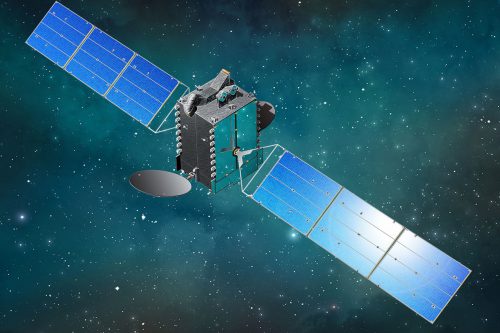
Back to selection
GEO Satellite
BSat-2c GEO
succesfull
Launch date
11 June 2003
Country

Purpose
Communication
Position
110° East
Manufacturer
Operator
Launch operator
Launch vehicle
Ariane 5G
Expected lifetime
15 Years

BSAT-2c: Japanese Geostationary Satellite for Digital TV Broadcasting
Overview
BSAT-2c was a geostationary communications satellite operated by Broadcasting Satellite System Corporation (B-SAT) of Japan. Built by Orbital Sciences Corporation on the STAR-1 satellite platform, it was designed to deliver high-definition direct-to-home (DTH) television broadcasting across Japan. Positioned at 110° East, BSAT-2c operated alongside BSAT-2a, offering redundant broadcast services.
Launch and Mission Timeline
-
Ordered: October 2001 (to replace the failed BSAT-2b mission)
-
Launched: June 11, 2003, aboard an Ariane 5G rocket from Guiana Space Centre (ELA-3)
-
Commissioned: July 15, 2003
-
Decommissioned: August 2013, moved to graveyard orbit
-
Broadcast Transition: Supported Japan’s shift to digital TV, ending analog broadcasts by July 2011
Technical Specifications
-
Manufacturer: Orbital Sciences Corporation
-
Satellite Bus: STAR-1
-
Launch Mass: 1,275 kg (2,811 lb)
-
Dry Mass: 535 kg (1,179 lb)
-
Design Life: 10 years
-
Power Generation: 2.6 kW via dual solar arrays
-
Dimensions:
-
Stowed: 3.7 × 2.5 × 2.0 m (12.1 × 8.2 × 6.6 ft)
-
Solar Span: 11.5 m (38 ft)
-
-
Propulsion:
-
Solid rocket Star 30CBP for orbit raising
-
200 kg of liquid propellant for station keeping
-
-
Payload:
-
Ku-band transponders: 4 active + 4 spares
-
TWTA output power: 130 Watts per channel
-
Mission Legacy
BSAT-2c played a crucial role in advancing digital satellite broadcasting in Japan, offering reliable, high-power Ku-band transmission during a pivotal transition period from analog to digital broadcasting. It served as a direct replacement for BSAT-2b, which failed during launch, and extended B-SAT’s capacity for nationwide DTH services.
GEO Satellite
BSat-2c
succesfull
GEO Satellite
BSat-2c
succesfull
